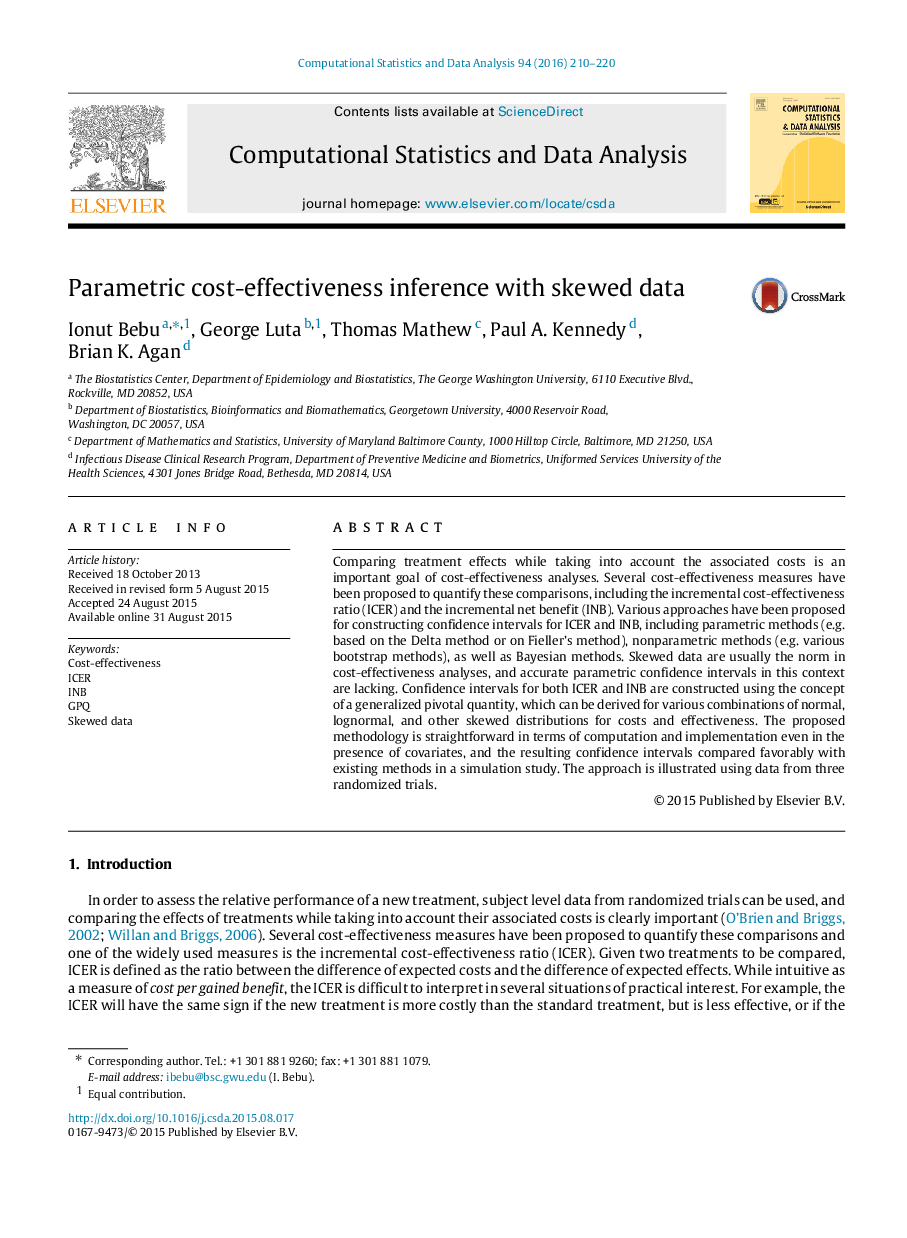| Article ID | Journal | Published Year | Pages | File Type |
|---|---|---|---|---|
| 6869435 | Computational Statistics & Data Analysis | 2016 | 11 Pages |
Abstract
Comparing treatment effects while taking into account the associated costs is an important goal of cost-effectiveness analyses. Several cost-effectiveness measures have been proposed to quantify these comparisons, including the incremental cost-effectiveness ratio (ICER) and the incremental net benefit (INB). Various approaches have been proposed for constructing confidence intervals for ICER and INB, including parametric methods (e.g. based on the Delta method or on Fieller's method), nonparametric methods (e.g. various bootstrap methods), as well as Bayesian methods. Skewed data are usually the norm in cost-effectiveness analyses, and accurate parametric confidence intervals in this context are lacking. Confidence intervals for both ICER and INB are constructed using the concept of a generalized pivotal quantity, which can be derived for various combinations of normal, lognormal, and other skewed distributions for costs and effectiveness. The proposed methodology is straightforward in terms of computation and implementation even in the presence of covariates, and the resulting confidence intervals compared favorably with existing methods in a simulation study. The approach is illustrated using data from three randomized trials.
Keywords
Related Topics
Physical Sciences and Engineering
Computer Science
Computational Theory and Mathematics
Authors
Ionut Bebu, George Luta, Thomas Mathew, Paul A. Kennedy, Brian K. Agan,
